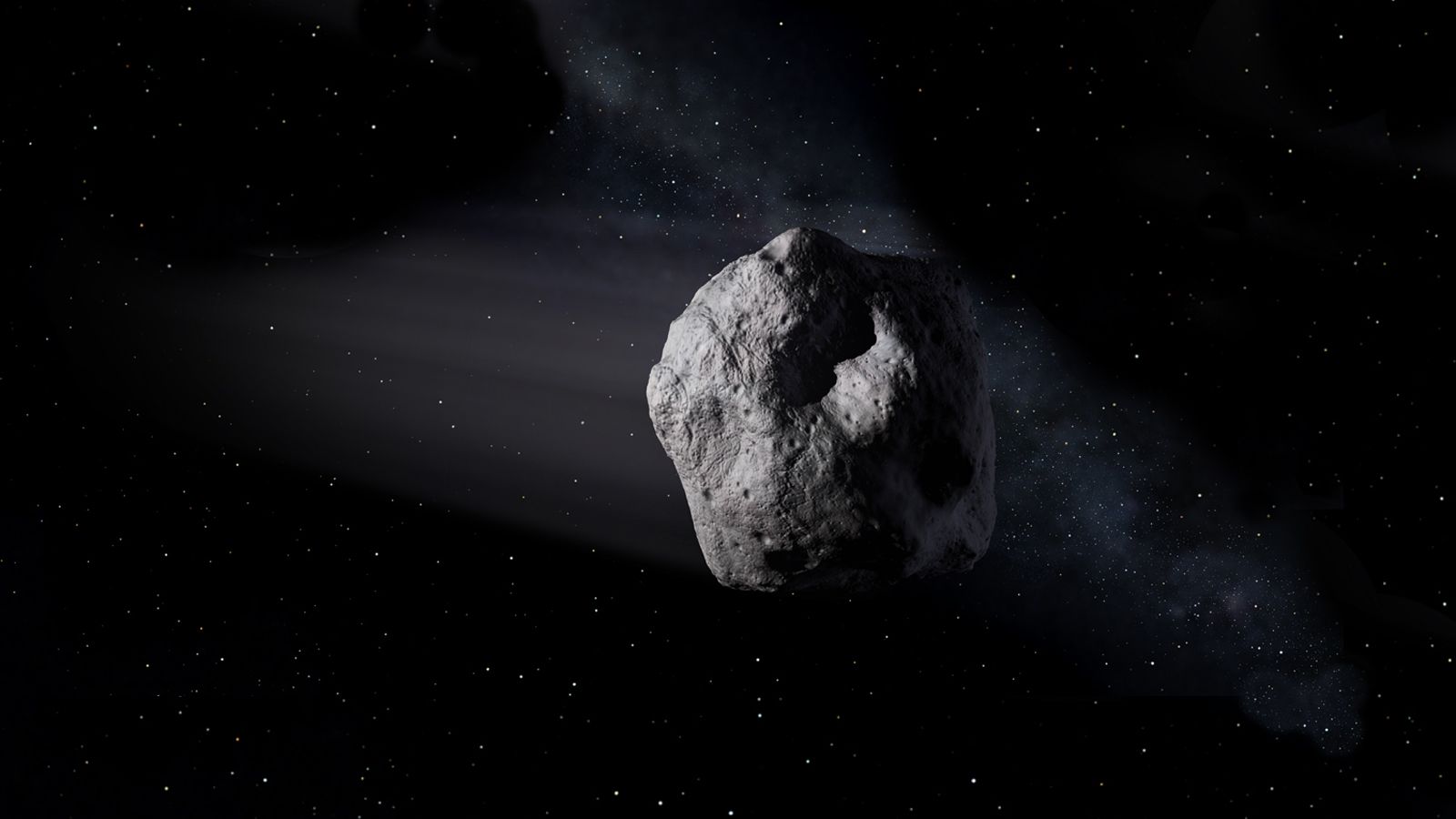
On February 4, an asteroid called 2002 AJ129 is due to slip past Earth. It is between 1600 and 4000 feet across, according to NASA's Center for Near Earth Object Studies, but there's no chance it will make impact—NASA has calculated it will remain 2.6 million miles away.
That still makes it what astronomers call a "potentially hazardous asteroid," thanks to its size being more than about 500 feet across and an orbital path that carries it within about 4,650,000 miles of Earth.
But while they're confident we won't all go the way of the dinosaurs, scientists do want to keep an eye on the space rock—and they'll do so with the Goldstone Radio Telescope in California. That is one of the U.S.'s two high-powered radar astronomy facilities, along with the Arecibo telescope in Puerto Rico.
There are a whole host of asteroid characteristics scientists would like to understand—their size, their shape, how quickly they rotate, what they look like on the inside, and the like. That's where radar astronomy comes into play. "We can actually learn a great deal about objects and start to answer some of these questions using radar observations," Lance Benner, a NASA astronomer who uses radar technology to study passing asteroids, told Newsweek.
Most astronomy is passive, simply gathering signals that space produces naturally. But radar astronomy creates its own signal with the much more powerful cousin of the radar systems used to direct traffic at airports or to tell weather forecasters when to expect rain. It's an imaging technique that blasts a powerful beam of radio waves, which are very long waves of light, out into space to bounce off an object. The telescope then picks up the faint echo of that pulse.
"The telescope is kind of like a great big flashlight where you're turning it on and turning it off," Benner said. What the scientists end up with is an image he compares to an ultrasound of a baby—it's not a photograph, but it still provides a whole bunch of useful information to scientists. Putting together a series of those images, like a flipbook, lets scientists put together a portrait of the asteroid. For example, they can see whether it is lumpy or angular, depending on how it reflects the radar's light.
Benner and his fellow scientists have already booked the Goldstone radar facility to study about 40 asteroids in 2018, although that number will likely increase as currently undiscovered asteroids continue to be identified. 2002 AJ129 is just the third of these targets to skim by Earth—there are plenty more opportunities ahead to pull out the radar telescope this year.
Uncommon Knowledge
Newsweek is committed to challenging conventional wisdom and finding connections in the search for common ground.
Newsweek is committed to challenging conventional wisdom and finding connections in the search for common ground.
About the writer
Meghan Bartels is a science journalist based in New York City who covers the science happening on the surface of ... Read more
To read how Newsweek uses AI as a newsroom tool, Click here.








